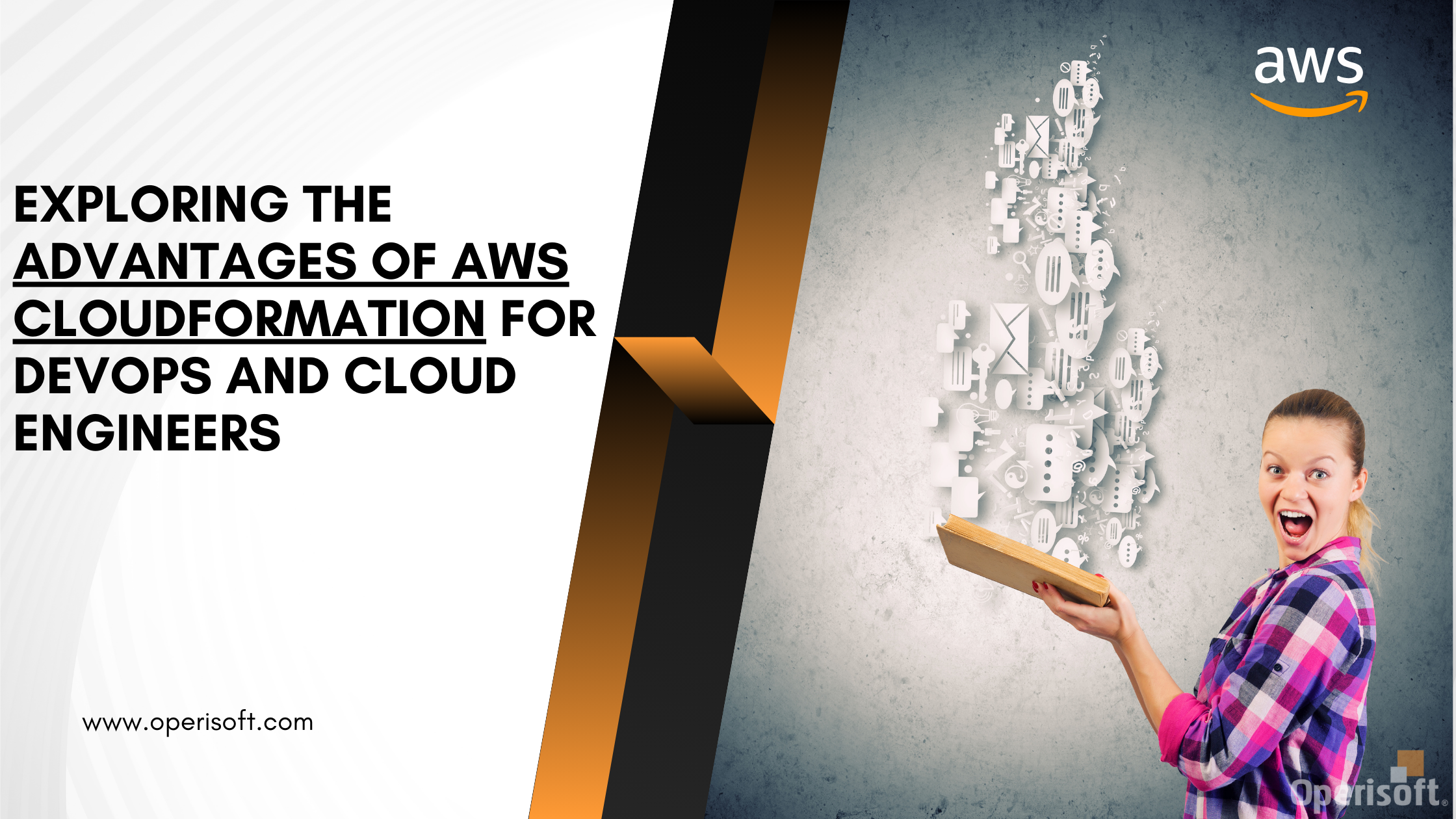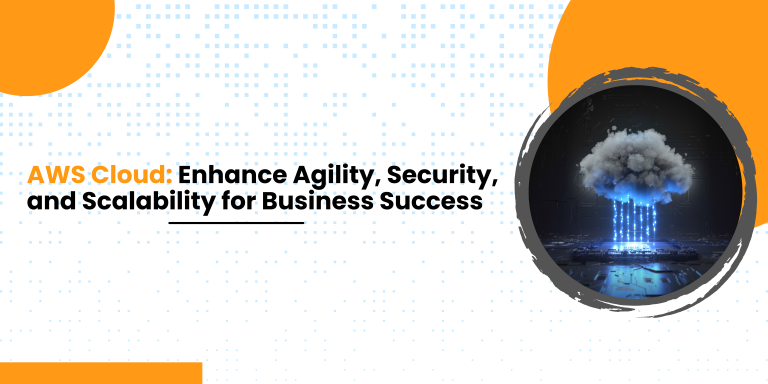Introduction
In the dynamic world of cloud computing, where speed, scalability, and reliability reign supreme, AWS CloudFormation emerges as a hero for DevOps and Cloud Engineers. As we delve into the captivating realm of AWS CloudFormation, we’ll uncover how it empowers these professionals to orchestrate their infrastructure with finesse, ensuring efficient deployments and robust operations.
Simplifying Infrastructure Management
Gone are the days of manual setup and configuration. AWS CloudFormation offers a unified platform to create and manage resources effortlessly. With a simple JSON or YAML template, Cloud Engineers can define their infrastructure’s blueprint. This eliminates human error and enhances consistency, setting the stage for a more reliable environment.
Infrastructure as Code: A Paradigm Shift
Imagine treating your infrastructure as if it were software code. AWS CloudFormation makes this possible through Infrastructure as Code (IAC). This paradigm shift allows DevOps teams to version-control their infrastructure, enabling seamless collaboration and rapid iterations. The power of IAC ensures that every change is tracked, tested, and deployed efficiently.
Rapid and Reproducible Deployments
Deployments become a breeze with AWS CloudFormation. Once the template is defined, you can replicate your entire infrastructure stack effortlessly. This means that whether you’re deploying in the development, testing, or production environment, the process remains consistent and error-free. Say goodbye to deployment anxiety!
Resource Dependency Management
Resource management can be daunting in complex cloud architectures. AWS CloudFormation simplifies this challenge by managing resource dependencies intelligently. It ensures that resources are created in the correct order, avoiding conflicts and errors that could potentially cripple your deployment.
Cost Optimization through Efficient Resource Allocation
Resource allocation can make or break your cloud budget. AWS CloudFormation aids in optimizing costs by allowing you to define and allocate resources precisely as needed. This prevents overprovisioning and wastage, leading to more cost-effective cloud operations.
Enhanced Collaboration and Consistency
Collaboration across teams is essential, but it can also be challenging. AWS CloudFormation promotes collaboration by providing a standardized way to define and share infrastructure templates. This eliminates ambiguity and discrepancies, fostering a culture of consistency and cooperation.
Rollback and Recovery Made Easy
Mistakes happen, even in the most meticulous environments. AWS CloudFormation mitigates risk by enabling easy rollback and recovery. If a deployment fails or causes issues, reverting to a previous known state is a seamless process, ensuring minimal disruption to your services.
Flexibility and Customization
One size doesn’t fit all in the cloud landscape. AWS CloudFormation recognizes this by offering flexibility and customization. You can tailor your templates to suit your specific requirements, incorporating different AWS resources, parameters, and conditions.
Scalability and Automation
The cloud’s true power lies in its scalability. AWS CloudFormation allows you to design for scalability from the ground up. As your application’s demands grow, your infrastructure can scale accordingly, ensuring optimal performance without manual intervention.
Security Benefits
Security is paramount in any cloud environment. AWS CloudFormation inherently promotes security by allowing you to define security measures within your templates. This ensures that security configurations are consistent and adhered to across all stages of your infrastructure.
Monitoring and Troubleshooting
Maintaining a healthy infrastructure requires robust monitoring and troubleshooting capabilities. AWS CloudFormation integrates seamlessly with AWS monitoring tools, providing insights into resource utilization, performance metrics, and potential bottlenecks.
Integration with Other AWS Services
AWS CloudFormation isn’t an isolated tool—it’s part of a powerful ecosystem. It seamlessly integrates with other AWS services, allowing you to combine its capabilities with those of services like AWS CloudTrail, AWS Identity and Access Management (IAM), and AWS Config.
Continuous Delivery and Integration
Continuous Delivery and Integration (CI/CD) are the cornerstones of modern software development. AWS CloudFormation fits right into this approach by enabling the automated deployment of infrastructure changes as part of your CI/CD pipeline.
Also Read: AWS CloudFormation Sample Demo
Conclusion
In the realm of cloud engineering, AWS CloudFormation stands as an indispensable tool for DevOps and Cloud Engineers. Its ability to simplify infrastructure management, embrace Infrastructure as Code, enable rapid deployments, and enhance collaboration make it a key player in creating robust and efficient cloud environments.
FAQs
Can I use AWS CloudFormation with other cloud providers? Absolutely! While AWS CloudFormation is optimized for use within the AWS ecosystem, it can also be integrated with some non-AWS resources and services.
Is AWS CloudFormation suitable for small-scale applications? Yes, definitely. AWS CloudFormation’s benefits extend to applications of all sizes. It can help streamline the deployment and management process for small-scale projects as well.
How does AWS CloudFormation handle updates to templates? AWS CloudFormation performs updates intelligently. It only updates the necessary resources that have changed, minimizing disruption and ensuring efficient updates.
What happens if a resource creation fails in AWS CloudFormation? If the creation of a resource fails, AWS CloudFormation automatically rolls back the changes to maintain the desired state of your infrastructure.
Can I roll back changes made through AWS CloudFormation? Yes, you can. AWS CloudFormation keeps track of previous stack versions, allowing you to roll back to a previous state in case of issues or unintended changes.
As you embark on your journey with AWS CloudFormation, you’ll uncover a world of possibilities that elevate your infrastructure management to new heights. Whether you’re a DevOps professional or a Cloud Engineer, the benefits are undeniable. So dive in, harness its capabilities, and watch your cloud deployments flourish like never before.







